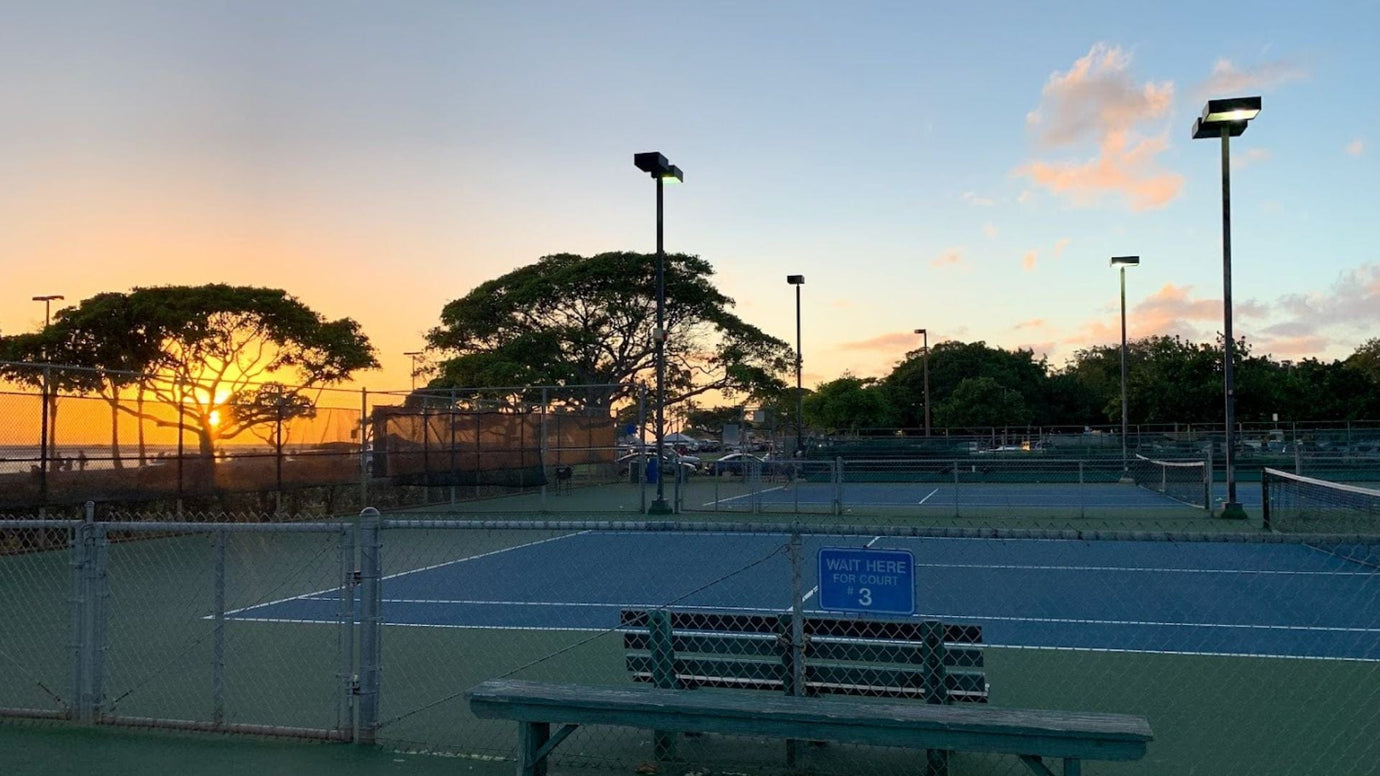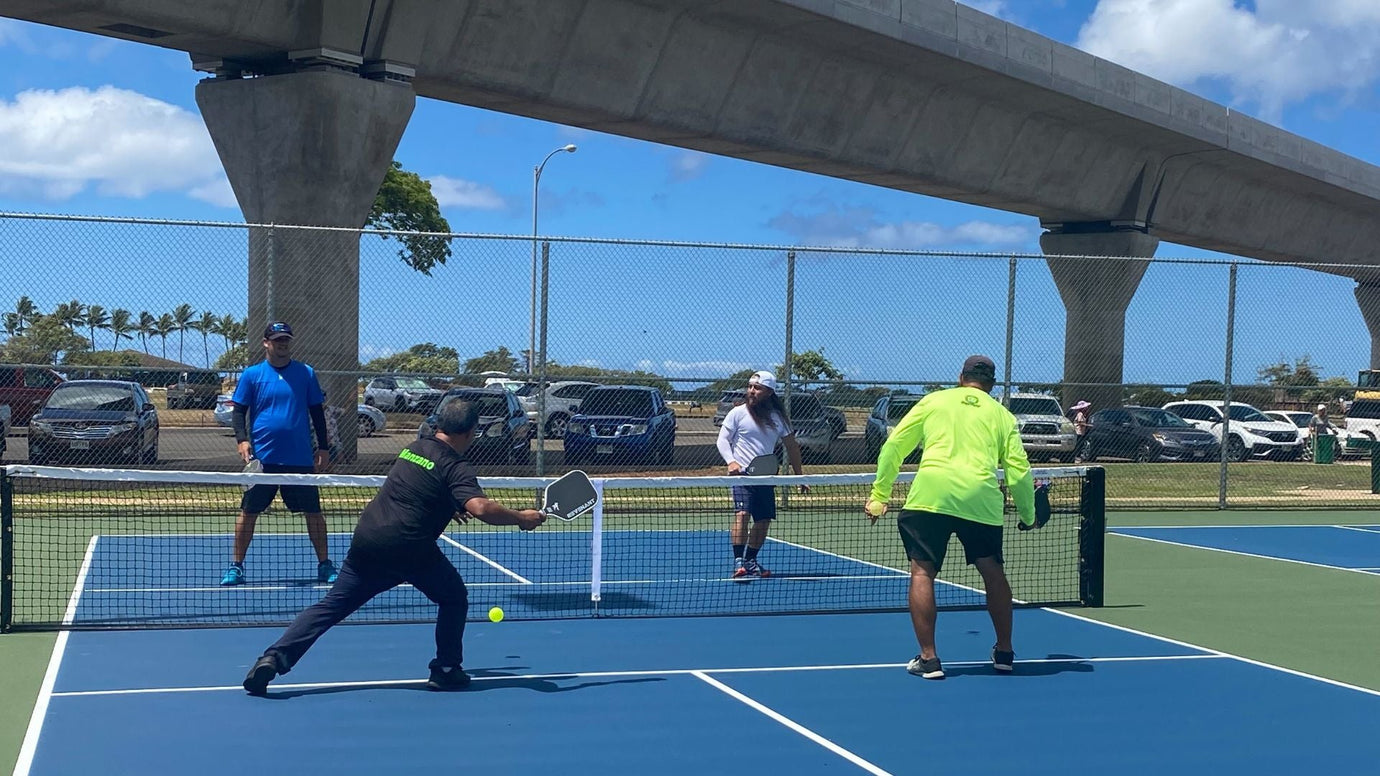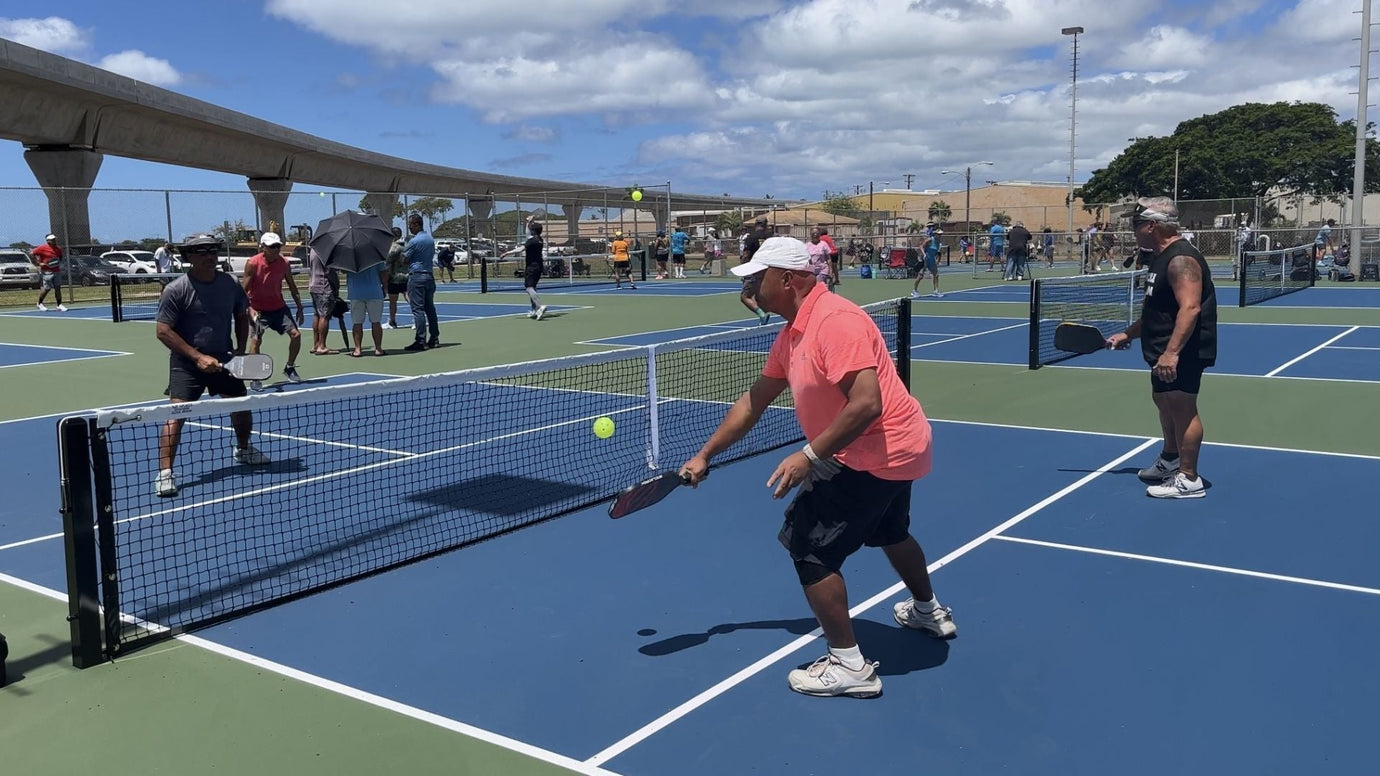Pickleball continues to grow in popularity because of its simple rules and lively rallies. But when rain leaves outdoor courts slick, players often wonder: is it safe to play in those conditions? The reality is that moisture makes the surface slippery, raising the likelihood of slips, trips, and injuries.
If the ground is only a little damp and starting to dry, some people may decide to play—though with extra caution. Wearing footwear with strong grip helps, as does moving more deliberately to avoid falls. It’s also smart to wipe off the ball regularly to keep it bouncing consistently.
In contrast, if the court is soaked or puddles are visible, the safest decision is to delay the match. Water not only endangers players but also changes how the ball reacts, often skidding in unpredictable ways.
Ultimately, safety should come first. No rally or match is worth an injury. If the weather doesn’t cooperate, use the break as a chance to rest, stretch, or do indoor exercises until the court is playable again.
In short: avoid playing pickleball on wet courts. If it’s just slightly damp, proceed carefully with the right gear. But if the court is waterlogged, take a rain check—your body will thank you.
Remember: a safe game is always the best game. Don’t let a rainy day ruin the fun; just wait for clear skies before stepping back on court.
Assessing Wet Court Risks
When evaluating whether a pickleball court is playable after rainfall, it’s important to remember that water makes the surface slick, which increases the risk of falls and sprains. A quick inspection before play ensures that everyone can enjoy the game without worrying about accidents. Wet conditions also affect the game’s quality and may damage equipment over time.
It’s better to err on the side of caution and check the court yourself. Following safety guidelines and waiting until it’s fully dry will protect both players and gear.
Tip: If you play in varying conditions, consider investing in paddles made with weather-resistant materials. They often provide more reliable grip and control even when humidity is high.
Identifying Court Conditions
Before jumping into a match, confirm that the surface is ready. Here’s what to check:
- Look for shiny patches or puddles. Any pooling water means the surface is unsafe.
- Check for discoloration. Darker areas may still be damp, which alters the ball’s bounce.
- Touch the ground. Your hand should feel dry and not slick.
- Clear away debris. Twigs, leaves, or trash can also cause players to stumble.
The goal is to keep play safe and enjoyable. If water or debris is present, take time to fix the issue before starting. Installing slip-resistant surfacing and maintaining the court regularly can also reduce risks.
Quick advice: bring a towel to every session—you’ll be glad to have it if you need to dry off spots before play.
Timing for Court Drying
Knowing how long a court takes to dry is crucial. Players often rely on sunlight, temperature, and wind, but they can also use tools to speed things up. The surface type matters too: concrete and asphalt dry quicker than clay or grass.
The emotional rollercoaster while waiting often looks like this:
| Stage | Feeling |
|---|---|
| Just rained | Disappointed |
| Edges drying | Hopeful |
| Almost dry | Optimistic |
| Wet patches | Frustrated |
| Completely dry | Excited |
Players often use towels, rollers, or leaf blowers to push along the drying process. For instance, after a storm, a group of players might clear the court in half an hour with blowers and towels, then enjoy a perfect morning of pickleball.
Utilizing a Court Roller
A roller is one of the most effective tools to clear excess moisture quickly, making the surface safe again. Other options include:
- Squeegees: Push standing water away.
- Absorbent cloths or chamois: Soak up damp patches.
- Leaf blowers: Help water evaporate faster.
- Natural drying: Rely on sun and breeze.
The purpose isn’t just drying—it’s ensuring players can move safely without risk of slipping. Whether using simple towels or more advanced equipment, the outcome is the same: getting back to the game with minimal delay.
When weather cooperates, nature often does the drying for you. But if time is short, tools like blowers or rollers are invaluable.
Motto to keep in mind: “A dry court is a safe court. Clear the water, then enjoy the game.”
Employing a Leaf Blower
Leaf blowers work not only for drying but also for clearing twigs, leaves, and dirt. A clutter-free court reduces tripping hazards and keeps lines visible. Portable and convenient, blowers help keep courts playable without long waits.
For example, after a brief rain shower, a blower can make the court playable again in minutes—much quicker than waiting for sunshine alone. They’re especially useful for facility managers or dedicated players who want top playing conditions year-round.
Preparing for Safe Play
Before hitting the court, make sure everything is safe:
- Remove any wet spots or puddles.
- Use towels or a squeegee to dry areas.
- Wear shoes with solid traction.
- Check that the net is secure and in good shape.
Choosing the Right Equipment
The gear you use directly impacts both performance and safety. A paddle suited to your style provides better control and reduces injury risk. Pay attention to:
- Weight: Lighter paddles suit quick play, heavier ones add power.
- Grip size: The right fit prevents strain.
- Material: Durable paddles handle outdoor conditions better.
For example, players focused on precision might prefer lightweight paddles with smaller grips for faster handling. Outdoor players may benefit from weather-resistant composites that maintain performance in varying conditions.
Custom note: “The right paddle should feel like part of your arm—it makes the game smoother and more enjoyable.”
Enjoying Pickleball Responsibly
To keep the game safe and fun, pay close attention to court conditions:
- Inspect for damp patches before every game.
- Wait until the surface is completely dry after rain.
- Maintain the court regularly to avoid hazards.
- Wear proper footwear with strong grip.
Conclusion
Playing pickleball on a wet surface carries real risks—similar to walking on ice. The smarter choice is to wait until the court is completely dry or use tools to remove moisture. With proper footwear, quality gear, and patience, players can safely enjoy their game in any weather.
That way, pickleball stays what it’s meant to be: fun, safe, and rewarding.
Frequently Asked Questions
How does humidity affect drying time, and what precautions should I take?
High humidity slows evaporation, meaning courts stay wet longer. Moisture meters and surface sealants can help manage this. Monitoring forecasts and preparing equipment in advance ensures safe conditions.
Can certain shoes provide better grip on damp courts?
Yes. Shoes designed for court sports often feature herringbone or multi-directional treads for strong traction. Look for models with sticky rubber compounds for better grip, but note that softer soles may wear faster. Regular cleaning also maintains traction.
What warm-ups are recommended before playing on a slick court?
Dynamic stretches like lunges, leg swings, and agility drills activate muscles and improve balance. These movements prepare your body for sudden changes in direction and reduce the risk of slipping.
If light drizzle begins, when should the game pause?
Stop immediately to check conditions. Even a slight drizzle can quickly make the surface dangerous. Don’t wait until you notice slipping—pause as soon as rain starts.
Does playing on damp courts harm equipment?
Yes. Moisture can break down paddle materials and grips. Always dry your paddle and store it in a cool, ventilated place. Using covers and grip tape provides extra protection.






